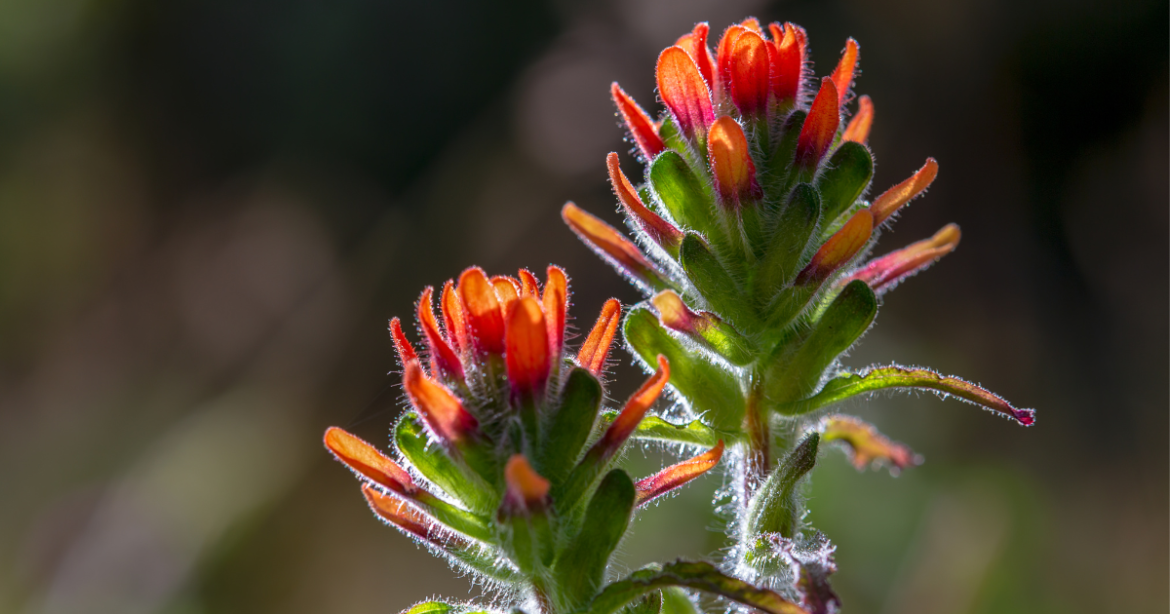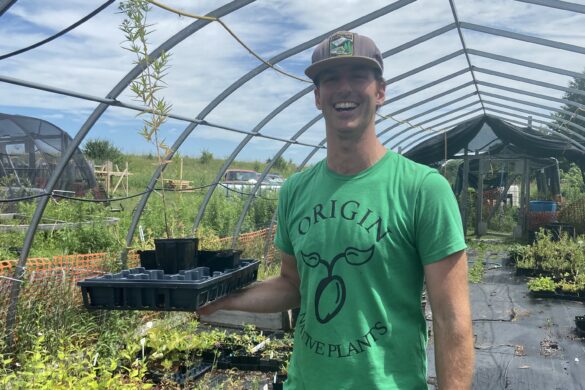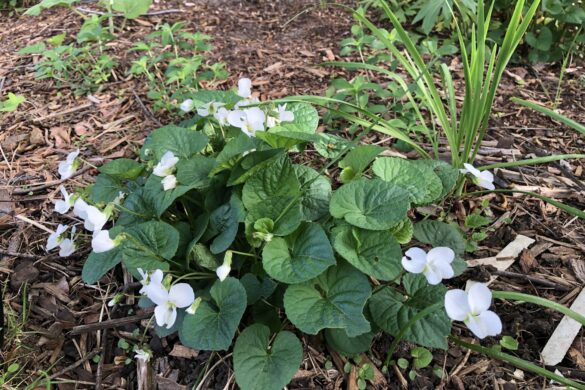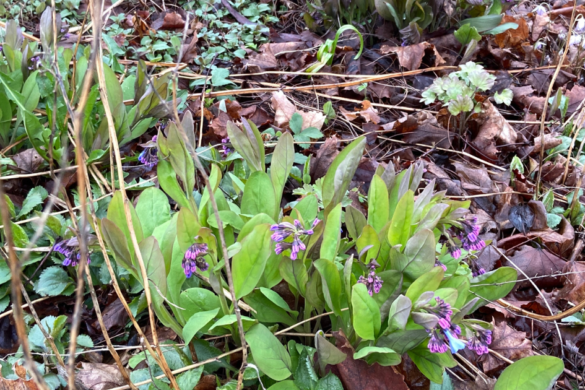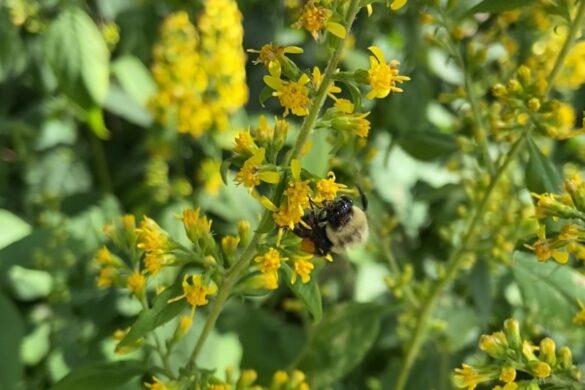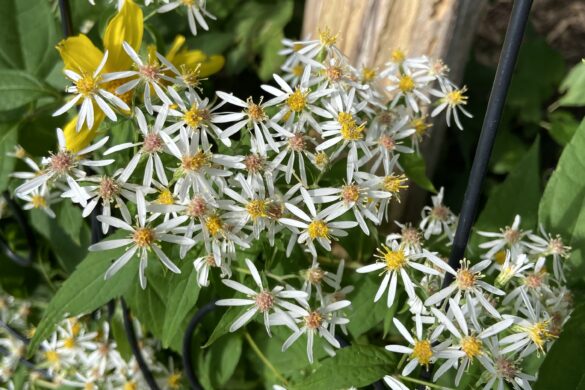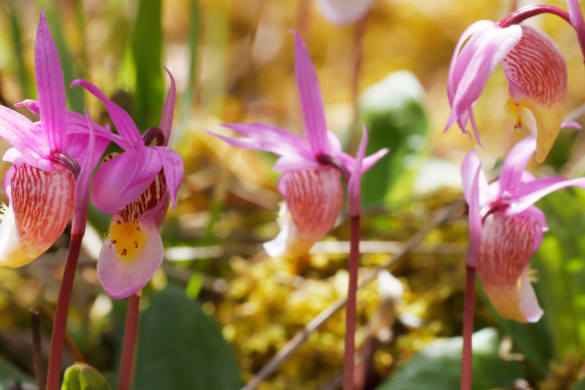A meadow filled with Indian paintbrush (Castilleja coccinea) wildflowers is a sight to behold. This brilliant red native plant (also known as scarlet paintbrush, scarlet cup and painted cup) graces fields and grasslands from late spring through mid-summer, although it is becoming increasingly rare throughout its natural range.
One place to see it is at the Carden Alvar in the Ontario’s Kawartha Lakes region.
This wildflower takes its name from its bright red bracts that are “shaped like birds’ feet,” Canadian biologist/ecologist Paul Heydon wrote in a 2017 post for the North American Native Plant Society: “The three-lobed bracts with showy scarlet tips provide the spectacle. The species name coccinea means scarlet although sometimes the bracts are yellow and look like their ends have been dipped in paint, hence the common name paintbrush.”
Getting to know the Carden Alvar
Prior to reading Heydon’s post, I’d never heard of an alvar, despite spending most of my life in Ontario. More research revealed that alvars are a globally rare type of grassland with thin soils and sparse vegetation and poor drainage over limestone bedrock.
These rocky, grassy expanses are home to a surprisingly diverse collection of plants, insects and birds. “The alvars in Carden are considered some of the most species-rich, high-quality alvars in the world,” writes Lauren Moretto for Nature Conservancy Canada. “In Carden, you can find over 230 species of birds, 450 plants and 140 dragonflies and butterflies, and many are only found in the area.” These endangered species include the loggerhead shrike, bobolink and other rare species.
A trip to Carden Alvar Provincial Park in early May for an Alvar Flora Tour Walk with master naturalist Bob Bowles revealed scarlet paintbrush just beginning to emerge. By the time of a second tour in mid-June, it was in full bloom. Early Canadian settlers recorded its presence at harvest time and even as late as October.
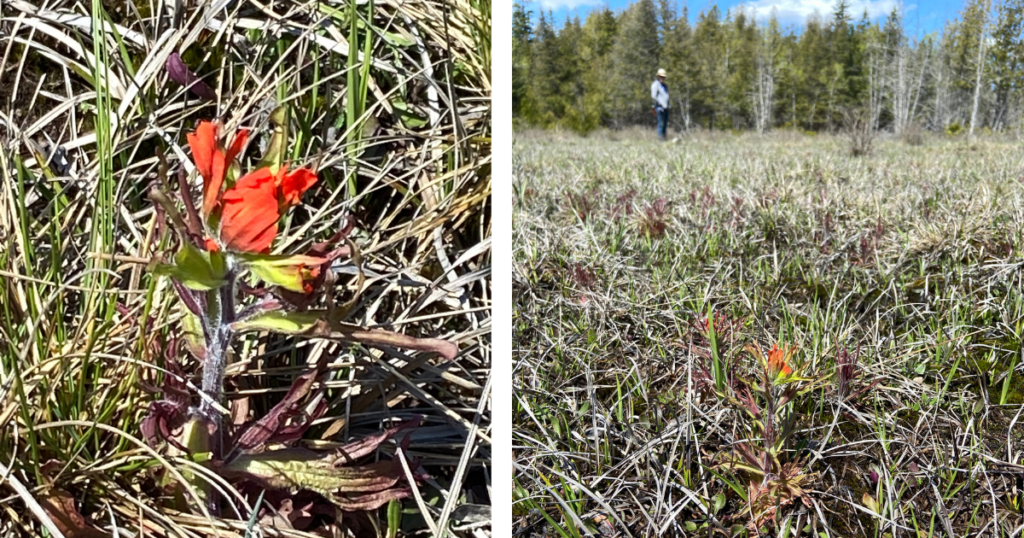
A dynamic, interdependent native plant community
Growing alongside Indian paintbrush in the unique alvar landscape are fragrant sumac (Rhus aromatica), bloodroot (Sanguinaria canadensis), prairie smoke (Geum triflorum), hairy beardtongue (Penstemon hirsutus), little bluestem (Schizachyrium scoparium), wood lily (Lilium philadelphicum), and blue-eyed grass (Sisyrinchium montanum) and many other fascinating native plants – providing an ever-changing tapestry of colour amid sedges, lichens, mosses alongside spans of flat rock.
Indian paintbrush is hemiparasitic, which means that it partly relies on nutrients from perennial grasses or other host plants, although it also relies on pollinators for reproduction.
“Like most red flowers, this species is especially adapted for pollination by hummingbirds. Hummingbirds have long bills that allow them to reach the nectar rewards at the end of long, tubular flowers. Also, the lack of a lower petal lip denies insects a perch to rest on, favoring hovering organisms like bees and hummingbirds,” states a U.S. Forest Service profile of Castilleja coccinea.
Indian paintbrush does best in full sun and is a biennial plant – a basal rosette appears in the first year and gives rise to a flowering stalk that grows one or two feet tall in year two, with small greenish flowers nestled amid the dense fans of bright red bracts (The bracts can also be orange or yellow, usually with red tips.)
Eroding natural habitat threatens Indian paintbrush
While Indian paintbrush is native to prairie meadows, grasslands, woodlands, thickets and stream banks across eastern and central North America, it is threatened across most of its natural habitat, with the exception of Ontario and Manitoba where it is listed as “Apparently Secure,” according to Wild Species: The General Status of Species in Canada 2020 report.
As with many other native plants and wildflowers, it is “threatened by land-use conversion, habitat fragmentation, forest management practices, succession” and other factors (NatureServe Explorer database).
Indian paintbrush is listed as “critically imperiled” in Saskatchewan, New Jersey, West Virginia, Kentucky, Georgia, Alabama, and Mississippi, and “endangered” in New York, Connecticut and Maryland.
Sadly, it is thought to be extirpated (extinct) in Maine and New Hampshire, and possibly extirpated in Louisiana, Massachusetts, and Rhode Island, according to the NatureServe Explorer database.
Unlike many other native plants, Indian paintbrush isn’t easy to grow in cultivated gardens, making it a truly ‘wild’ wildflower that depends on its symbiotic relationship with other host plants, insects and birds.
Alvars, which occur only in the Great Lake Basin in North America, are also globally imperilled.
Indian paintbrush is one of the species contributing to that rich and precious ecological diversity, so if you are visiting the Carden Alvar or other natural area, please take only pictures of wildflowers and refrain from picking or interfering with them in any way.
A U.S. Forest Service article on wildflower ethics and native plants puts it this way:
“A critical chain of events is triggered for years to come once wildflowers are lost. We don’t often realize it, but wildflowers support entire ecosystems for pollinators, birds, and small animals on a micro scale. Butterflies and other insects, small birds, and animals depend on seeds, nectar, and pollen for their food supply and life support system. In addition, some pollinators are not very mobile or have very small home ranges or depend on just one species of plant and die once their habitat has been destroyed.”

